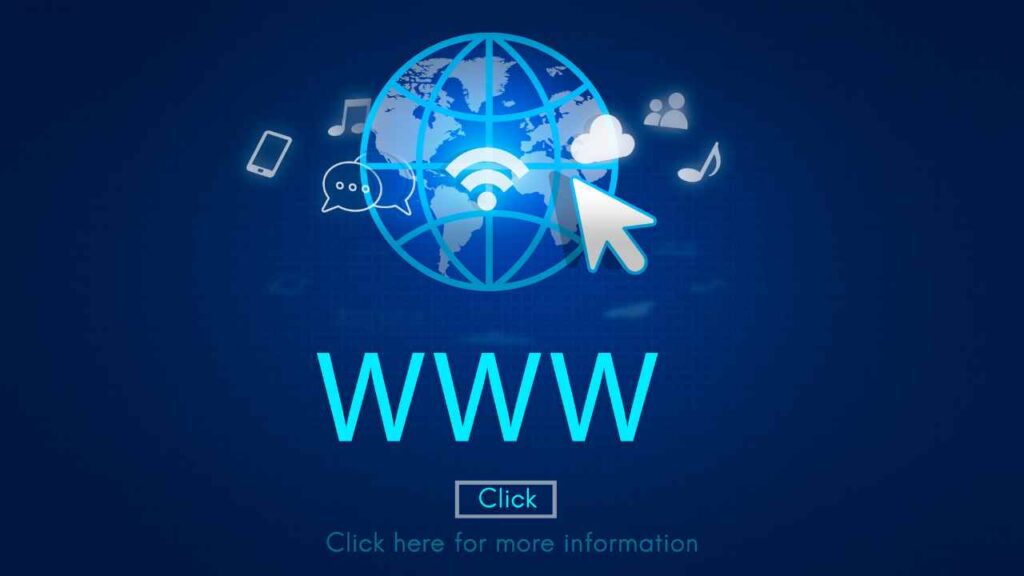The Day the World Wide Web was Born: A Look Back at the Inception of the Internet
Imagine a world where information is locked away in dusty libraries, inaccessible to the masses. A world where connecting with someone on the other side of the world is a feat of technological wizardry. That world was the reality in the early days of the internet.
But all that changed with the birth of the World Wide Web (WWW or simply “the web”). The web brought the internet to life, making it possible to access information and connect with others with ease. The web has a fascinating history and it all started on March 12, 1989, when British computer scientist Sir Tim Berners-Lee proposed a new way of organizing and sharing information.
Before the creation of the web, sharing information and accessing it was a difficult and time-consuming process. Information was stored on different computers and there was no standard way to access it. This made it challenging for people to access information from multiple sources and to share information with others.
What is the World Wide Web?
The World Wide Web (WWW) is a system of interlinked hypertext documents that can be accessed via the internet. It was invented by British computer scientist Tim Berners-Lee in 1989 while he was working at CERN, the European Organization for Nuclear Research.
What is www meaning?
The World Wide Web is a platform for communication, commerce, education, research, and more. It has become an essential tool for people across the globe and has fundamentally changed the way we live, work, and interact. The significance of the World Wide Web cannot be overstated, as it has transformed the way we access information, connect with others, and conduct business. It has also played a major role in promoting access to knowledge, freedom of expression, and economic development.

The Birth of the World Wide Web
Tim Berners-Lee, a computer scientist and engineer, proposed the concept of the World Wide Web in 1989 while working as a software engineer at CERN, the European physics research facility in Switzerland. He envisioned a system that would allow scientists to easily share information and collaborate on research projects.
To bring his vision to life, Berners-Lee (inventor of world wide web) developed several key technologies, including HTML (Hypertext Markup Language), which is used to create web pages, and HTTP (Hypertext Transfer Protocol), which is used to transfer data over the internet. He also created URLs (Uniform Resource Locators), the address system that allows users to access web pages.
On August 6, 1991, Berners-Lee launched the first website, which was hosted on a NeXT computer at CERN. The website was a simple page with information about the World Wide Web project and instructions on how to access other web pages. The website address was http://info.cern.ch/hypertext/WWW/TheProject.html and it was the first website to go live.
In the early days of the World Wide Web, it was primarily used by scientists and academics to share information and collaborate on research projects. However, as the web grew and became more accessible, it began to be used for a wide variety of purposes, including personal communication, online business, and as a source of news and entertainment.
How the World Wide Web Works
The web works by using a browser, such as Google Chrome or Mozilla Firefox, to access a website. When you enter a URL into your browser, it sends a request to a server, which then sends back the information for that website. The information is displayed on your computer screen in the form of a web page. The web page can contain text, images, videos, and links to other web pages.

The Future of the World Wide Web
The World Wide Web has come a long way since its birth in 1989 and has revolutionized the way we access and share information online. But what does the future hold for the web?
There are several trends and technologies that are likely to shape the future of the World Wide Web. Here are a few of the most significant:
Artificial Intelligence and Machine Learning
Artificial intelligence (AI) and machine learning (ML) are likely to play an increasingly important role in the future of the web. AI and ML algorithms can be used to provide more personalized and relevant experiences for users, as well as to improve search engines and recommendation systems. For example, AI-powered chatbots can help businesses provide 24/7 customer support and improve their customer service.
The Internet of Things (IoT)
The Internet of Things (IoT) refers to the growing network of connected devices, from smart homes to wearable technology, that are connected to the internet. In the future, the web is likely to play a crucial role in connecting and controlling these devices. For example, smart home systems could be controlled via a web-based interface, making it possible to adjust the temperature, lighting, and other features from anywhere in the world.
Virtual and Augmented Reality
Virtual and augmented reality technologies are likely to become increasingly important in the future of the web. These technologies will allow users to experience the web in new and exciting ways, from virtual shopping experiences to augmented reality games. As VR and AR technologies become more advanced, the web is likely to play a crucial role in delivering these experiences to users.
Increased Focus on Privacy and Security
As the web continues to play an increasingly important role in our lives, privacy and security will become increasingly important. In the future, we can expect to see a greater emphasis on privacy and security measures, from secure encrypted connections to advanced authentication methods. This will help ensure that users’ personal information is protected and secure.
The World Wide Web has changed the world in many ways and has made access to information and communication easier and more efficient. It’s fascinating to think about where the web will go in the future and how it will continue to impact our lives.




